Ever wondered how many coats of varnish will bring out the true beauty of your wood project? Let’s unravel the mystery!

Varnish protects wood from environmental elements while enhancing its natural appearance.
When you’re working with varnish, it is important to know how many coats are required to get your desired finish without messing up the project.
So, as a woodworker who worked with varnish for so long, I thought to share my experience about, How many coats of varnish on wood?
For best results, apply at least 3 to 4 coats of varnish on the wood to get a protective finish with an enhanced natural finish. Apply two thin coats of varnish to build a good adhesion. Light sanding between each coat is recommended. Never apply more than 3 coats of spar varnish on wood.
But that’s a quick snapshot and there’s a lot more to know about how many coats of varnish on wood.

So, in this article, I’ll explore, how many layers of varnish you need, how thick can varnish be applied, how long should varnish dry between coats, and the number of coats of varnish on furniture, violin, wood floor, and more.
Furthermore, I’ll answer some frequently asked questions as well.
So, let’s jump in!
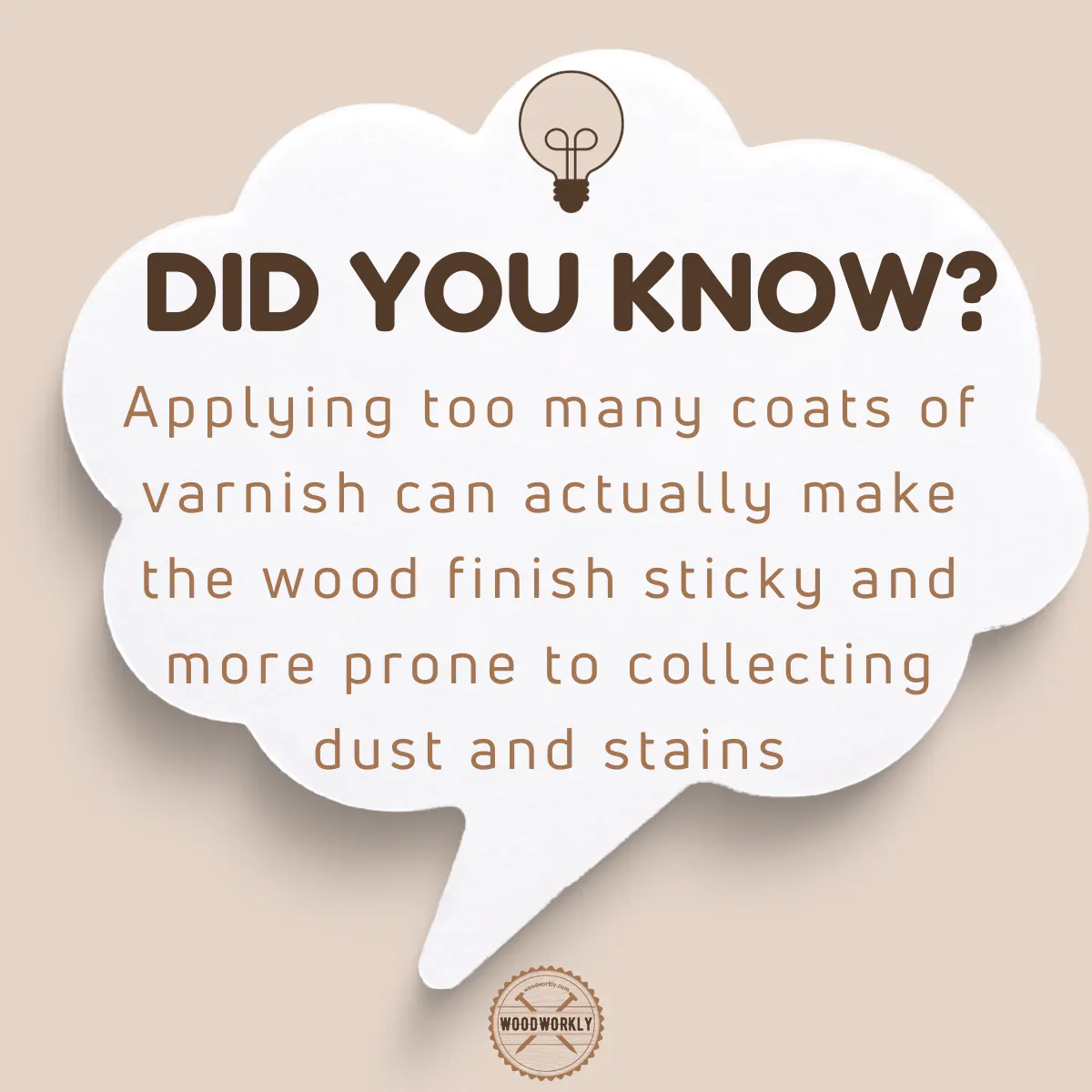
How Many Layers of Varnish Do You Need?
Apply 3 to 4 varnish layers on wood to get an excellent finish that helps to get your furniture or woodwork protected from environmental elements with an enhanced wood appearance.
Varnish coats protect the wood from water damage, dents, scratches, insect attacks, and wood cracks that occur due to various environmental changes.
Generally, wood is a sensitive material that changes physically and chemically due to temperature and humidity changes.
Varnish coats keep the wood surface away from environmental changes by making a shield around the wood.
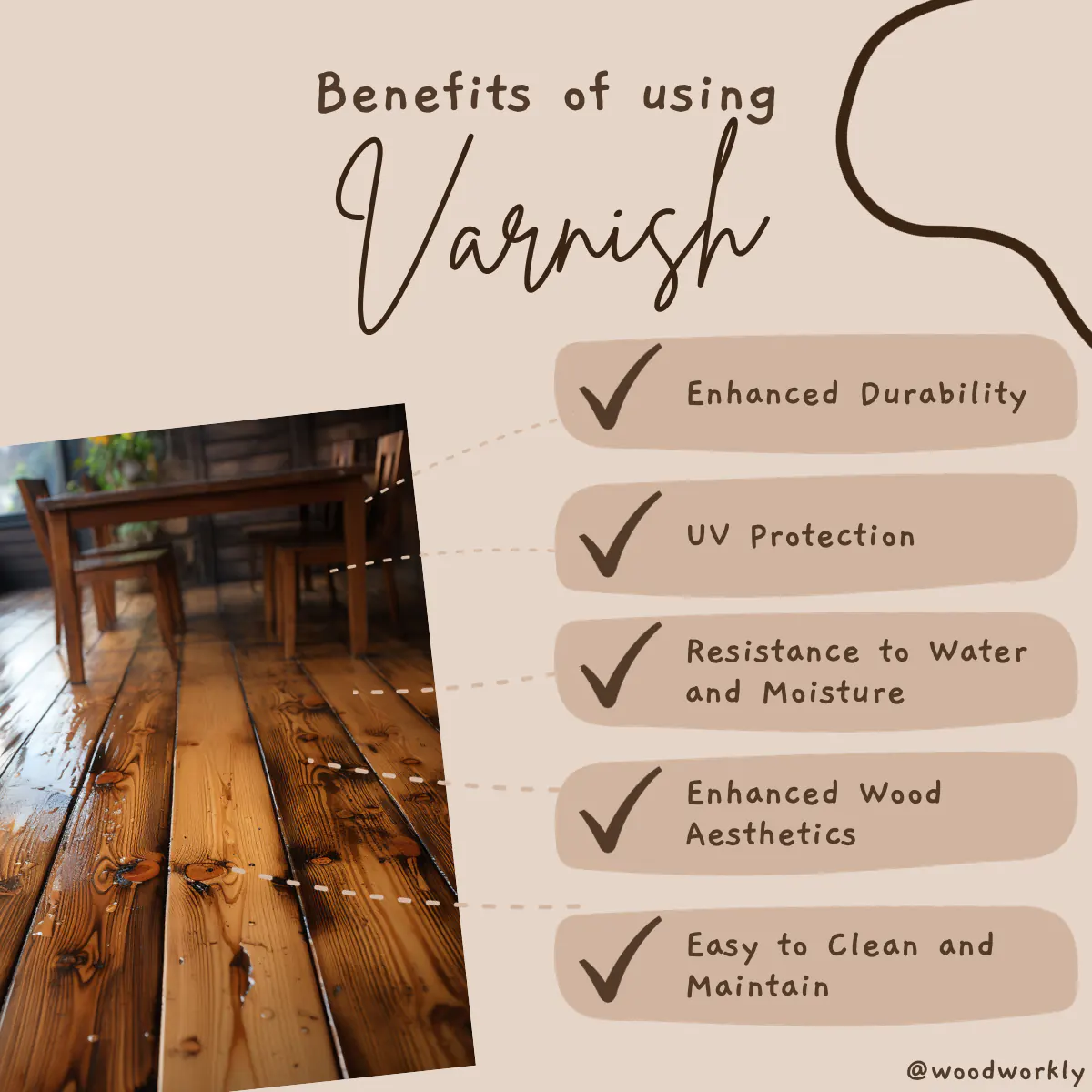
The number of varnish coats you should apply on wood depends on many factors. The number of varnish coats on wood depends mainly on,
- Finishing type – spray or brush or wiping
- Environmental humidity
- Varnish thinning
So, let’s discuss each of the above factors in detail.
How Does Finishing Type Affect the Number Of Varnish Coats On Wood?
You can apply varnish on wood by spraying, brushing, or wiping.
Even though all three application method comes with the same outcome, in the end, they differ in the thickness of varnish coats.
Usually, you’ll get less varnish coat thickness when spraying than brushing because when you’re spraying varnish particles released from the nozzle is extremely small and they build a thin coat over the wood.
Thin coats of varnish absorb well into the wood surface and dry faster than thicker ones.
Therefore, you’ll be able to apply more varnish coats when spraying than brushing.
Basically, 5 to 7 varnish sprays are equal to the 3 to 4 brush coats of varnish.
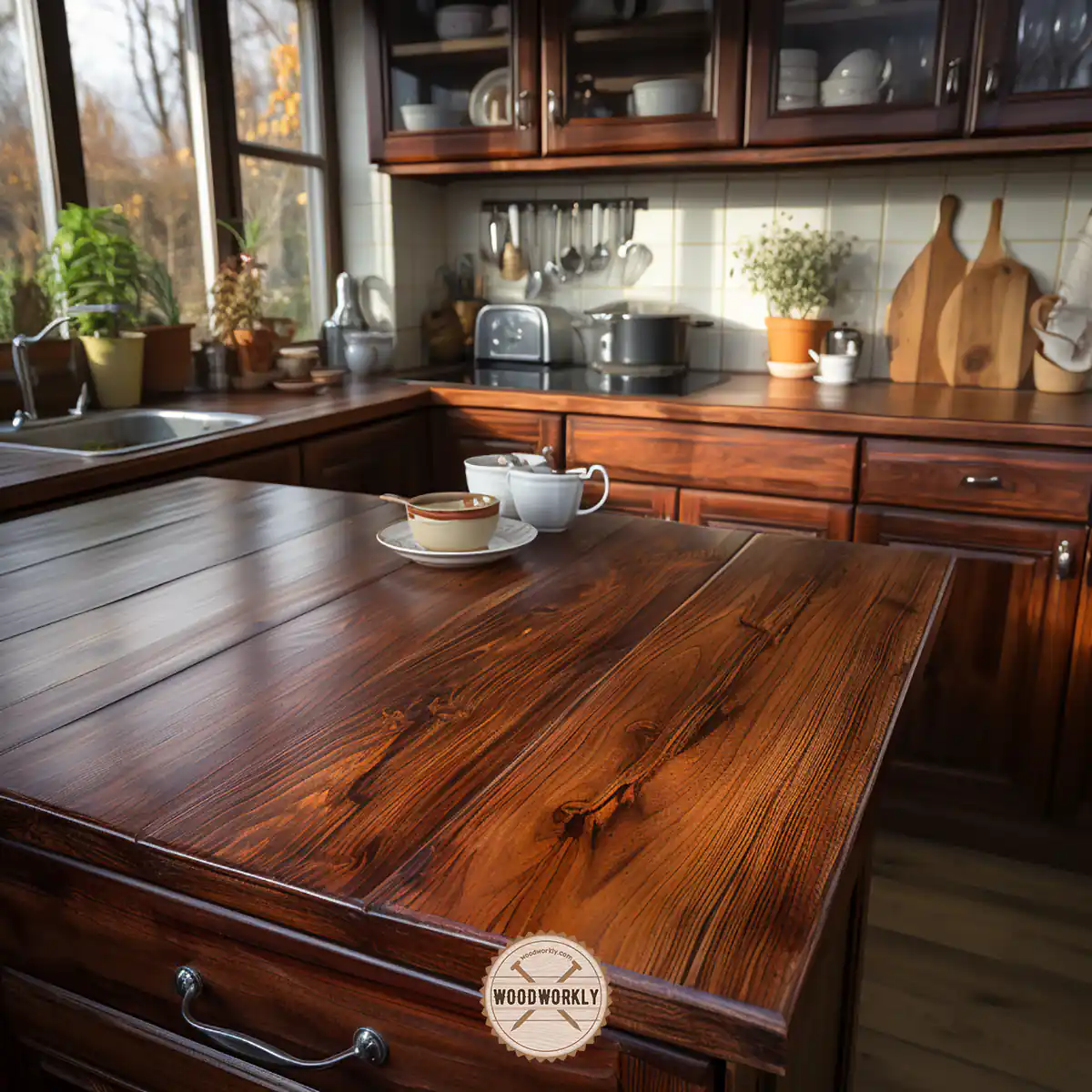
How Humidity Affects the Number Of Varnish Coats On Wood?
Varnish dries because of the evaporation of water. Water evaporation mainly depends upon environmental humidity and temperature levels.
When the environmental humidity is high, your lacquer coats dry slowly because of the slow evaporation rate.
Therefore, you won’t be able to apply a higher number of coats since there is a high possibility of ending up with never drying tacky surface when the number of varnish coats amount is high.
Same as when the environmental humidity is less, you can apply more varnish coats providing better protection to the wood since the evaporation speed is high.
Therefore, varnish coats dry faster.
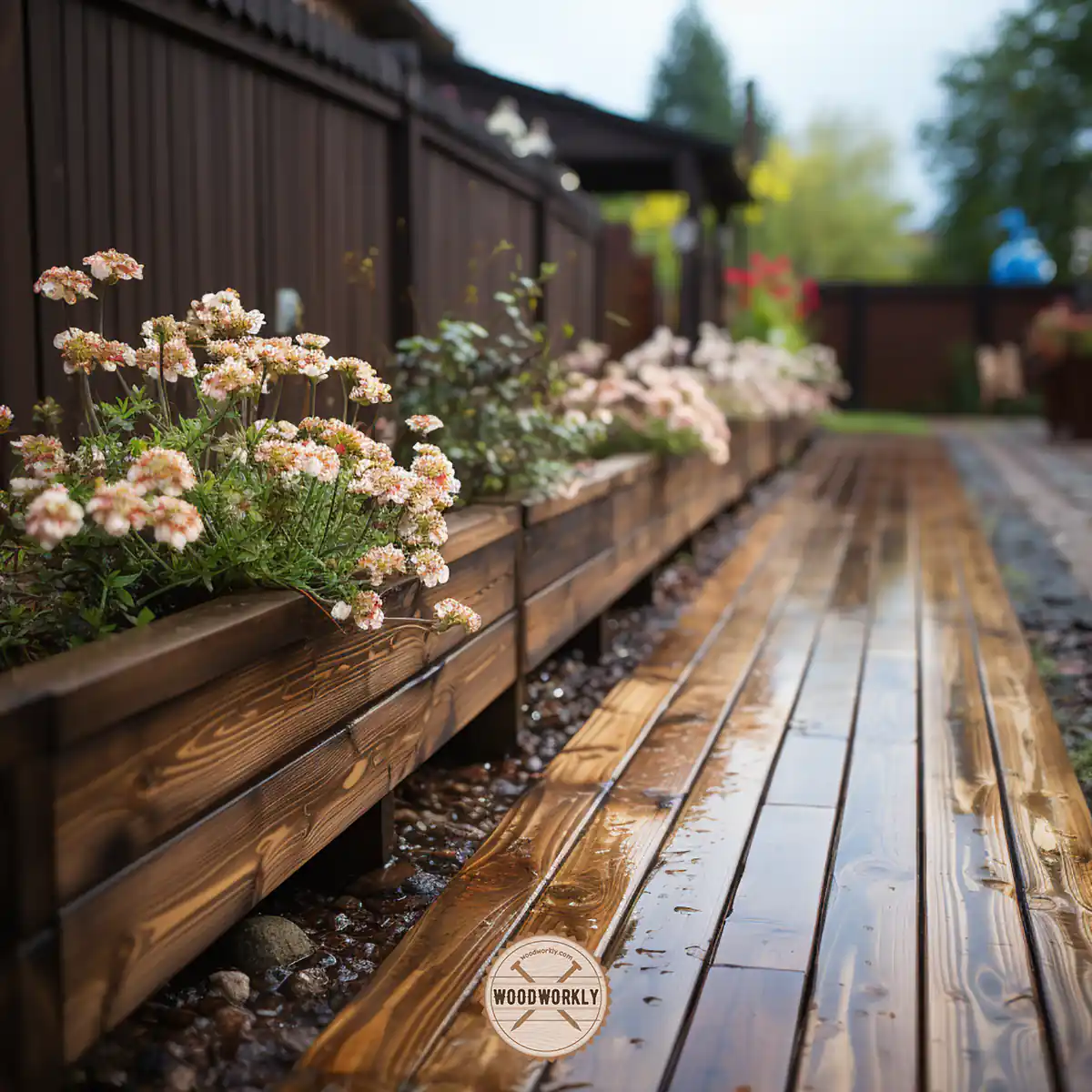
How does Varnish Thinning Affect the Number of Varnish Coats on Wood?
Varnish thinning is important to make the surface adhesive and for better absorption. Even though you’re using oil-based or water-based varnish, thinning is a must to get the desired finish.
Oil-based varnish should thin with mineral spirit or any other paint thinner. Water-based varnish should thin with water.
The first two coats of varnish should apply after thinning to seal the wood and make the surface adhesive for the last varnish coatings.
Without thinning you cannot apply more varnish coats on wood since there is less adhesion after the first two coats.
Therefore, you won’t be able to get maximum protection for your furniture or woodwork.
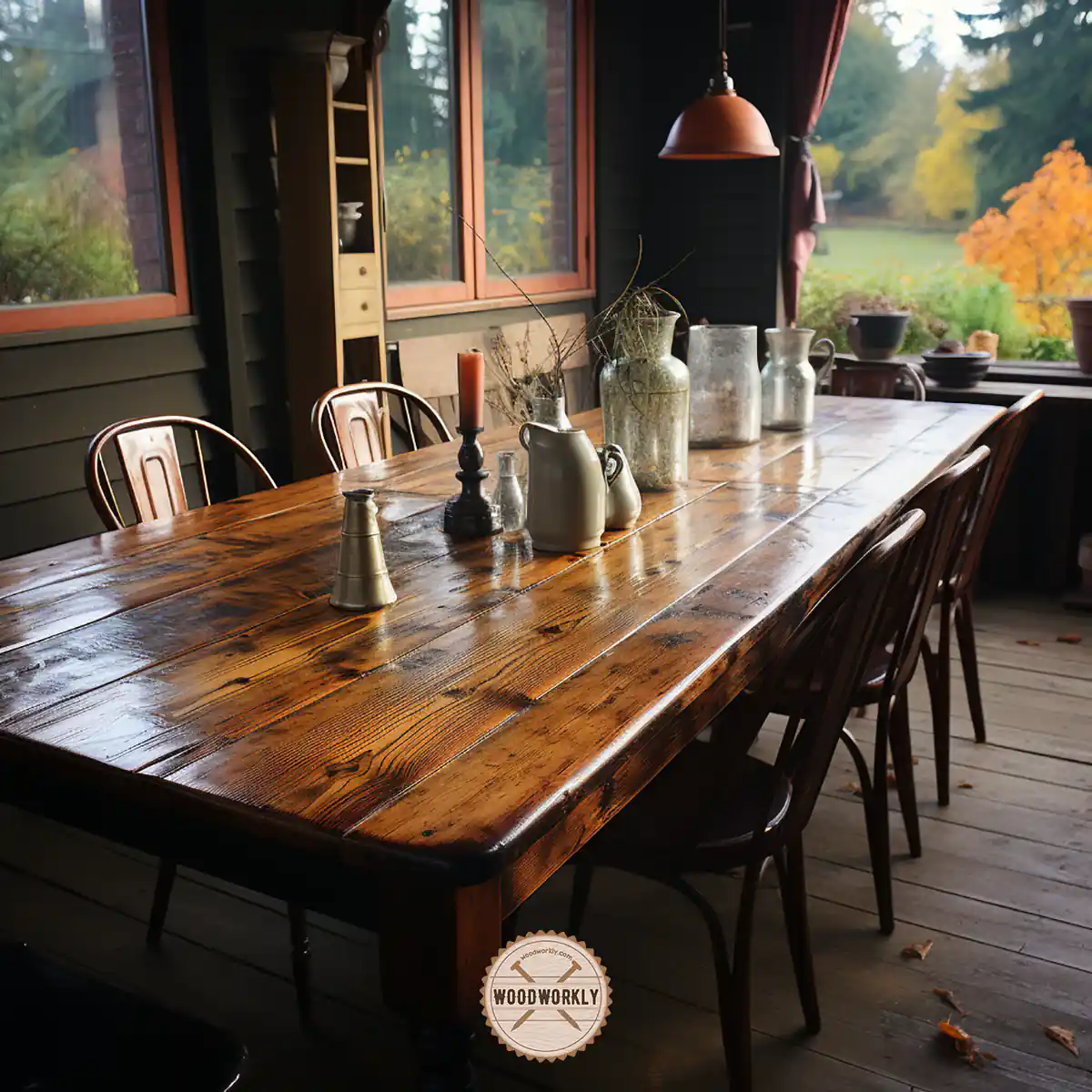
How Thick Can Varnish Be Applied?
Varnish can be applied with a thickness of 50 to 75 microns which means 2 to 3 thousand of an inch.
The application rate should be one fluid once to 7 square feet. Thin coats are better at drying and curing.
Thin varnish coats absorb well into the wood surface and build protective coating easily and they dry and cure faster with no drips, sags, or runs.
Thick coats of varnish take so much time to dry and cure and there is a high possibility of getting tacky, blotchy, or splotchy surfaces due to uneven drying of thick varnish coats.
When the varnish coats are thick, you cannot apply 3 to 4 coats of varnish flawlessly without forming brush marks, or other finishing problems.
You’ll probably have to stop the varnishing after a maximum of 2 coats.
Wood will get a dull appearance and varnish films are unable to protect the wood well when the films are thick.
Therefore, dip your brush a little in a varnish can and apply thin coats of varnish to get the maximum benefits from this awesome finishing product.
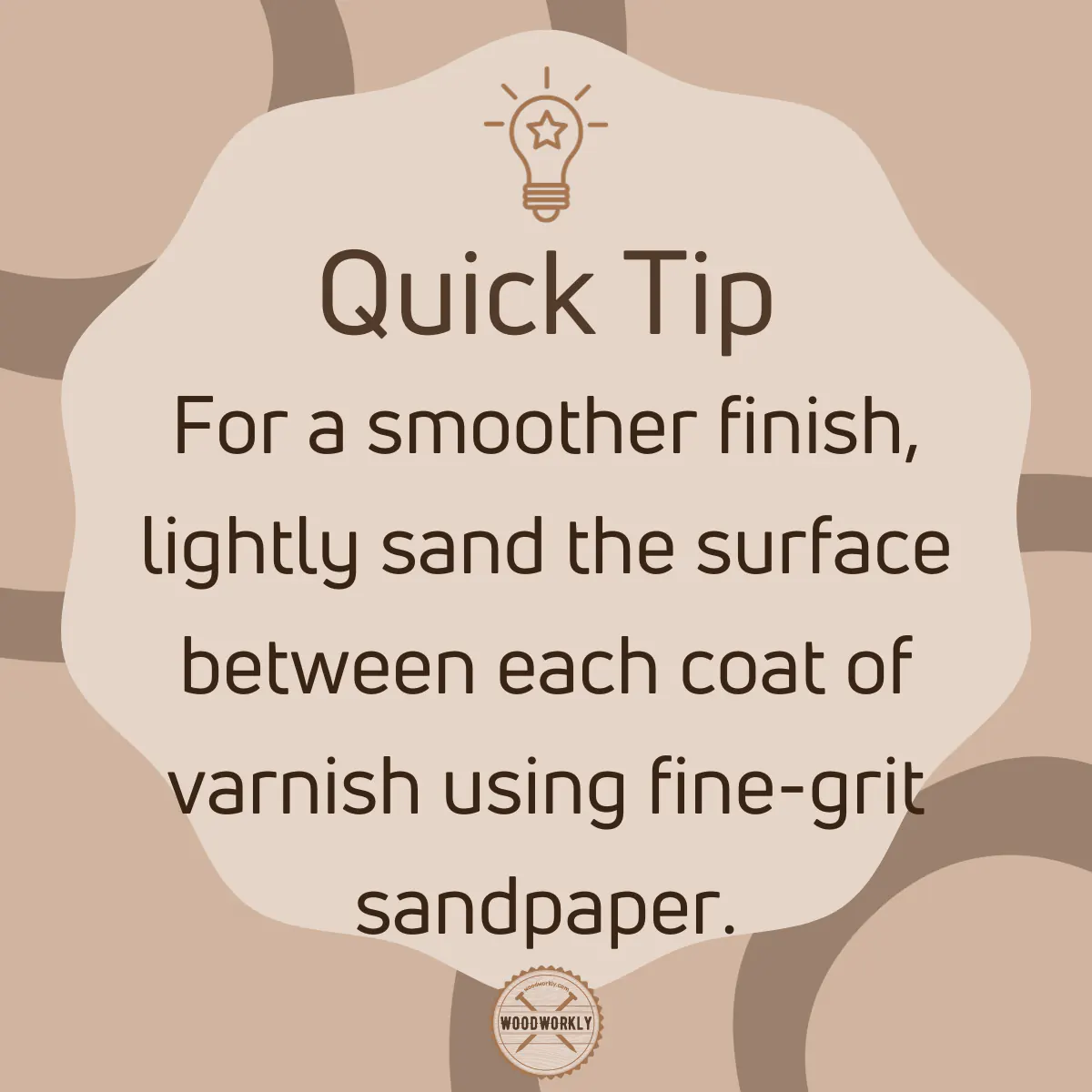
How Many Coats of Oil-Based Varnish On Wood?
Apply 2 to 3 coats of oil-based varnish on the wood. oil-based varnish takes more time for drying and curing process than water-based varnish.
Therefore, better not to go above 4 coats of oil-based varnish.
Oil-based varnish tends to be yellow with age.
Therefore, you’ll have to reapply oil-based varnish from time to time to keep the wood as fresh as new with enhanced protection.
The first coat of oil-based varnish should thin with mineral spirits to give the surface better adhesion and good absorption for upcoming coats.
Overall, oil-based varnish protects wood well and efficient to use than water-based varnish since oil-based varnish is better at protecting wood from water damage and other impacts.
Therefore, most people love to use oil-based varnish over water-based varnish despite its yellowing.
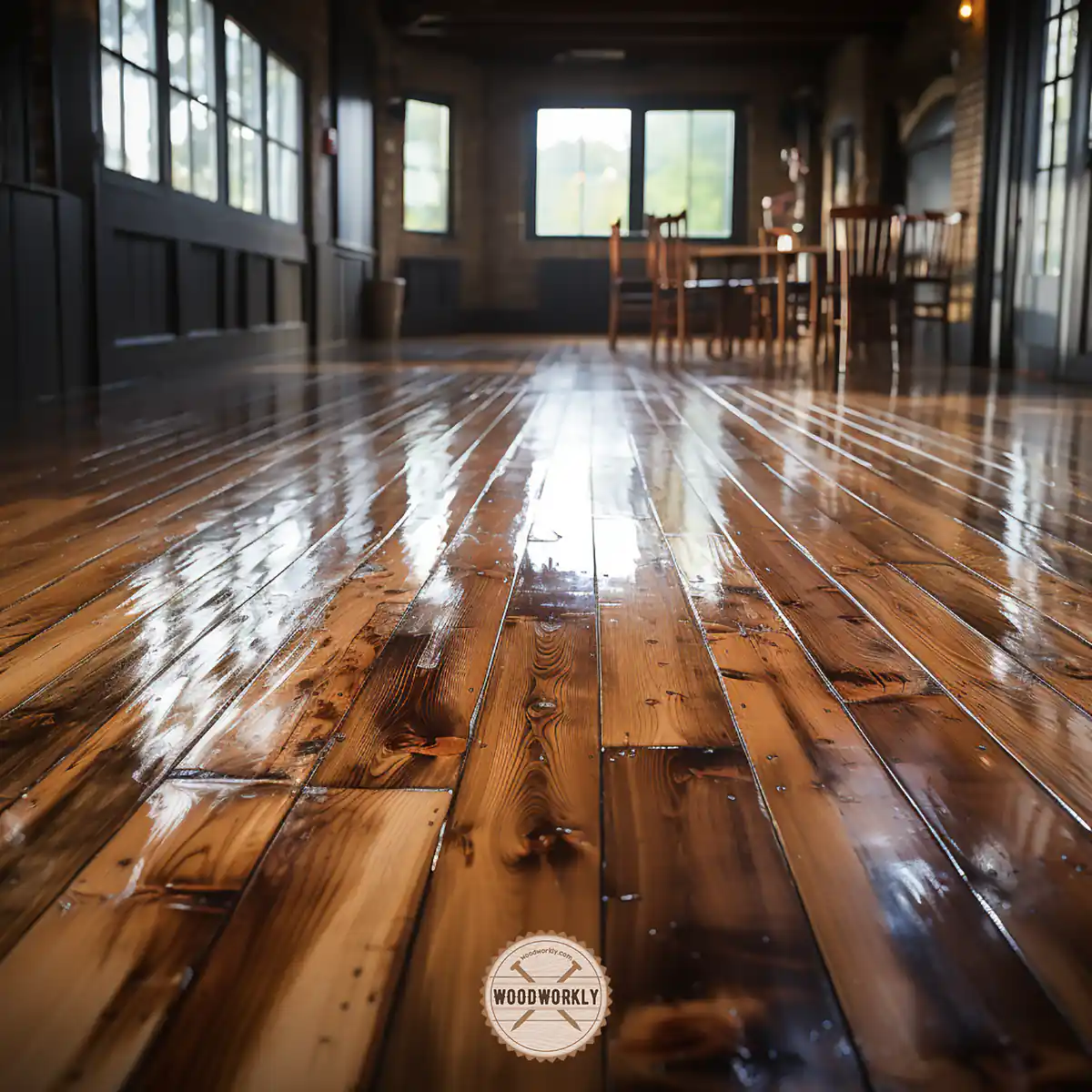
How Many Coats Of Water-Based Varnish On Wood?
Apply 3 to 4 coats of water-based varnish on the wood. Water-based varnish dries and cures faster than oil-based varnishes.
Therefore, you can apply more water-based coats than oil-based varnish. Plus, it causes no yellowing with age.
Water-based varnish gives a shiny, glossier look to your furniture and woodwork and protects wood from scratches, dents, wood imperfections, and more.
Plus, the water-based varnish is available in gloss, flat, semi-gloss, and satin finishes.
Actual Number of Coats of Varnish For Popular Products
Some so many manufacturers use different methods to produce quality varnish products.
Therefore, the number of required coats for desired finish and the drying time between each coat varies on the manufacturer.
Here’re some of the popular vanish manufacturers and their products with specific details about the number of coats that should apply with drying time.
| Varnish Product | Number of coats | Waiting time between coats | Best For |
| TotalBoat Gleam Marine Spar Varnish | 3 Coats | 48 hours | Wood on boats, Outdoor bar tops, Garage doors |
| Epifanes Clear Varnish | 3 – 4 Coats | 12 hours | Interior and exterior furniture |
| Rust-Oleum Marine Varnish | 2 Coats | 2 hours | Wood trims, Furniture |
| System 3 Clear Varnish | 5 – 6 Coats | 48 hours | Patio Furniture |
| Tried and True Varnish Oil | 3 Coats | 24 hours | Furniture, Dining surfaces, Knife handles |
As you can see most of the varnish needs to apply 3 to 4 coats on wood and the average drying time is around 24 hours.
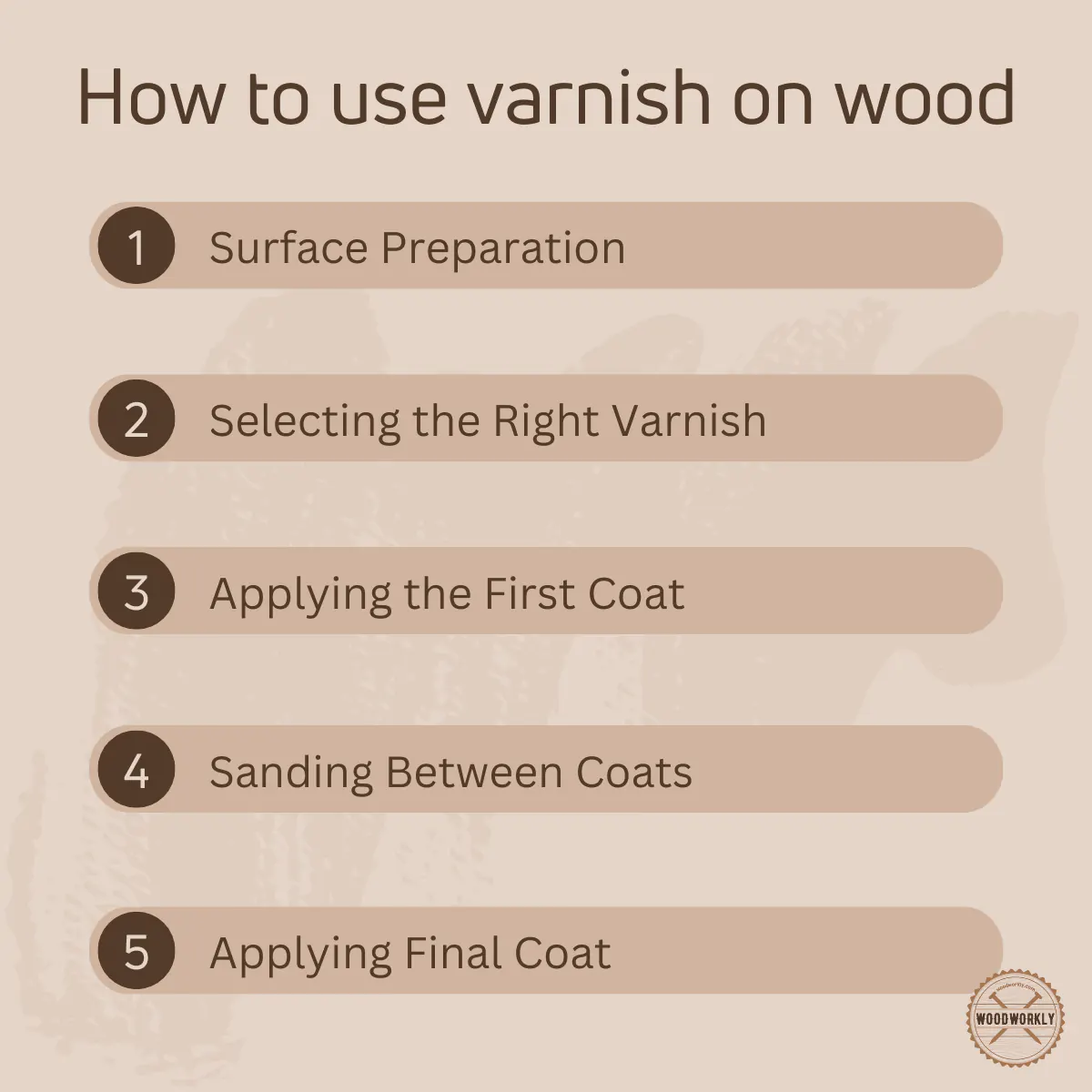
How Long Should Varnish Dry Between Coats?
Varnish should dry 12 to 24 hours between coats. Proper drying is a must to get a nice and smooth varnish surface with no blotches.
In humid environments, the varnish may take 48 hours to dry between coats.
Never apply another coat of varnish before the previous coat dried completely because that won’t make the protective film as you wish. Usually, varnish dries faster on bare wood.
This is why the first coat of varnish dries faster than the rest of the coats.
Letting varnish coats dry is important to avoid issues like forming drips and runs. Plus, it helps to give a nice flawless finish with an enhanced look.
Even though both lacquer and varnish are recommended to apply the same number of coats, lacquer dries and cures faster than varnish.
How Many Coats Of Spar Varnish On Wood?
Apply 3 coats of spar varnish on the wood. Never go above 3 coats of spar varnish because they won’t dry so well.
You should wait for at least 24 hours between spar varnish coats to get adequate protection.
After applying all 3 spar varnish coats on the wood, let it cure for 3 days before use.
Let the spar varnish dry overnight and protect the coat from small insects because they get attracted to the smell.
Sand lightly between each coat of spar varnish to get a super smooth finish with no brush strokes or drips.
How Many Coats Of Varnish Is Too Much?
More than 6 coats of varnish are too much since the final coats won’t dry properly and you won’t get the natural wood color because of the excessive thickness of varnish films. The surface will get wrinkles and an unpleasant appearance due to too many varnish coats.
3 coats of varnish are well enough to provide the necessary protection for wood.
Anything above 4 coats is not recommended because that’s a waste of varnish and your valuable time.
Therefore, try to get the desired finishing within 3 coats of varnish with no issues.
Applying unnecessary coats of varnish will ruin the appearance of your woodwork and it will stay gummy and skin over the wood surface.
How Many Coats of Varnish On Furniture?
Apply 2 to 3 coats of varnish on the furniture. After each coat let it set and dry for about 24 hours and light sanding is recommended for a smooth finish.
The first coat of varnish needs to be thinned to get better absorption. Plus, thinner helps to make the surface adhesive for the final coats.
After applying a total of 3 coats of varnish on the furniture, you’ll get 4-to-6-millimeter thickness film on the furniture.
Varnish protects wood from water damage, rotting, and decaying while enhancing the wood’s appearance.
Varnish is a great finish for both interior and exterior furniture, such as tabletops, kitchen tables, legs, chairs, doors, cabinets, and more.

How Many Coats of Varnish On Violin?
Apply 3 coats of varnish on the violin to make the surface glossy and protect the musical instrument from water damage, insect attacks, and rotting. Without affecting the sound of the violin.
Use dark reddish color varnish to apply on the violin to get a rich look.
When you’re applying varnish make sure not to go for thicker coats since they take a lot of time to dry and may ruin the appearance of the violin. Medium thickness is recommended.
How Many Coats of Varnish On Wood Floor?
Apply 2 to 3 coats of varnish on the wood floor to keep the floor protected from foot traffic, scratches, dents, pet scratches, and more.
Plus, the varnish will give a rich flawless appearance to your wood floor enhancing its sheen.
Make sure to let the varnish coats dry between coats and sand once each coat dried properly.
Otherwise, your wood floor will end up with a tacky surface and you may feel the floor sticky when using it for a while.
That’s it, folks, now you have a clear idea about how many coats of varnish should apply to wood the perfect finish as you wish with good protection and appearance.
How Long Does Varnish Last On Wood?
Varnish coats last on wood for around a year or two. Therefore, make sure to reapply varnish coats on the wood by removing the previous ones by sanding.
Oil-varnish coats tend to get yellow over time and they will give a dull ugly appearance to your woodwork. In order to keep furniture and wood surfaces as fresh as new, regular recoating is recommended.
With regular varnish application, you’ll be able to use your indoor and outdoor furniture for even more than a decade with no issues. Varnish works well to keep the wood protected from outdoor elements.
Does Clear Varnish Darken Wood?
Clear varnish does not darken the wood. But over time it may warm up the wood color. plus, oil-based varnish tends to get yellow over time. Overall clear varnish doesn’t change the wood color significantly.
Apply thin 2 to 3 coats of varnish to get a clear varnish finish with no drips or runs.
Let the varnish coats dry well for 24 hours during the application process. Once each coat is dried well, sand lightly with fine-grit sandpaper to keep the coat nice and smooth.
So, let’s answer some frequently asked questions as well.
FAQs
Why is the number of varnish coats important?
The number of coats of varnish is important as it dictates the durability and quality of the finish; applying the optimal number of coats will ensure proper protection and longevity.
What is the minimum and maximum number of varnish coats recommended?
The minimum recommended number of varnish coats is one, while the maximum is five, as exceeding this may lead to a finish that doesn’t dry properly and attracts dirt and stains.
How can I determine if an additional coat of varnish is needed?
To determine if another coat is needed, inspect the initial coat; if it appears thin and doesn’t adequately cover the surface, an additional coat is necessary, particularly for high-traffic surfaces.
What are the guidelines for applying yacht varnish?
When using yacht varnish, apply 2 coats for low-traffic surfaces, and consider 3 coats for exterior surfaces or boats, with a range of 2-4 coats being suggested by prominent manufacturers like Ronseal.
What is the recommended number of coats for spar and gamvar varnish?
Spar varnish typically requires 2-3 coats, while gamvar varnish needs between 1-2 coats for proper protection and coverage.
How many coats of varnish are needed for wooden surfaces?
Wooden surfaces generally require 1-3 coats of varnish, with the specific number depending on the type of wood and varnish, as well as the expected amount of traffic or wear.
How many varnish coats should be applied on oil paintings and outdoor furniture?
Oil paintings generally require just one coat of varnish to protect them, while outdoor furniture benefits from 3 coats to withstand weather elements effectively.
What is the advised number of varnish coats for boats?
Boats with bare wood need 5 coats of spar marine varnish for appropriate protection, whereas boats with an existing finish should receive 3-4 coats.
What number of varnish coats are recommended for stairs and paints?
Stairs, being a high-traffic area, require 3 coats of floor varnish, while surfaces with paint also need 3 coats of varnish to safeguard against moisture and other potential damages.
Did I cover all you wanted to know about: How Many Coats Of Varnish On the Wood?
In this article, I discussed deeply how many coats of varnish on wood, the ideal thickness of varnish films, the actual number of varnish coats for popular products, and how many varnish coats are required for furniture, wood floors, and musical instruments.
For a durable finish on wood, apply a minimum of 1 coat and a maximum of 5 coats of varnish. The specific number depends on the type of wood, varnish, and the surface’s usage, with 1-3 coats being commonly recommended for most projects.
Furthermore, I’ve answered frequently asked questions as well.
Hope you have gained good knowledge about how many coats of varnish on wood with in-depth analysis.
Try a varnish finish on your next woodworking project and try to do the job within a maximum of 3 coats of varnish. Practice makes you perfect!